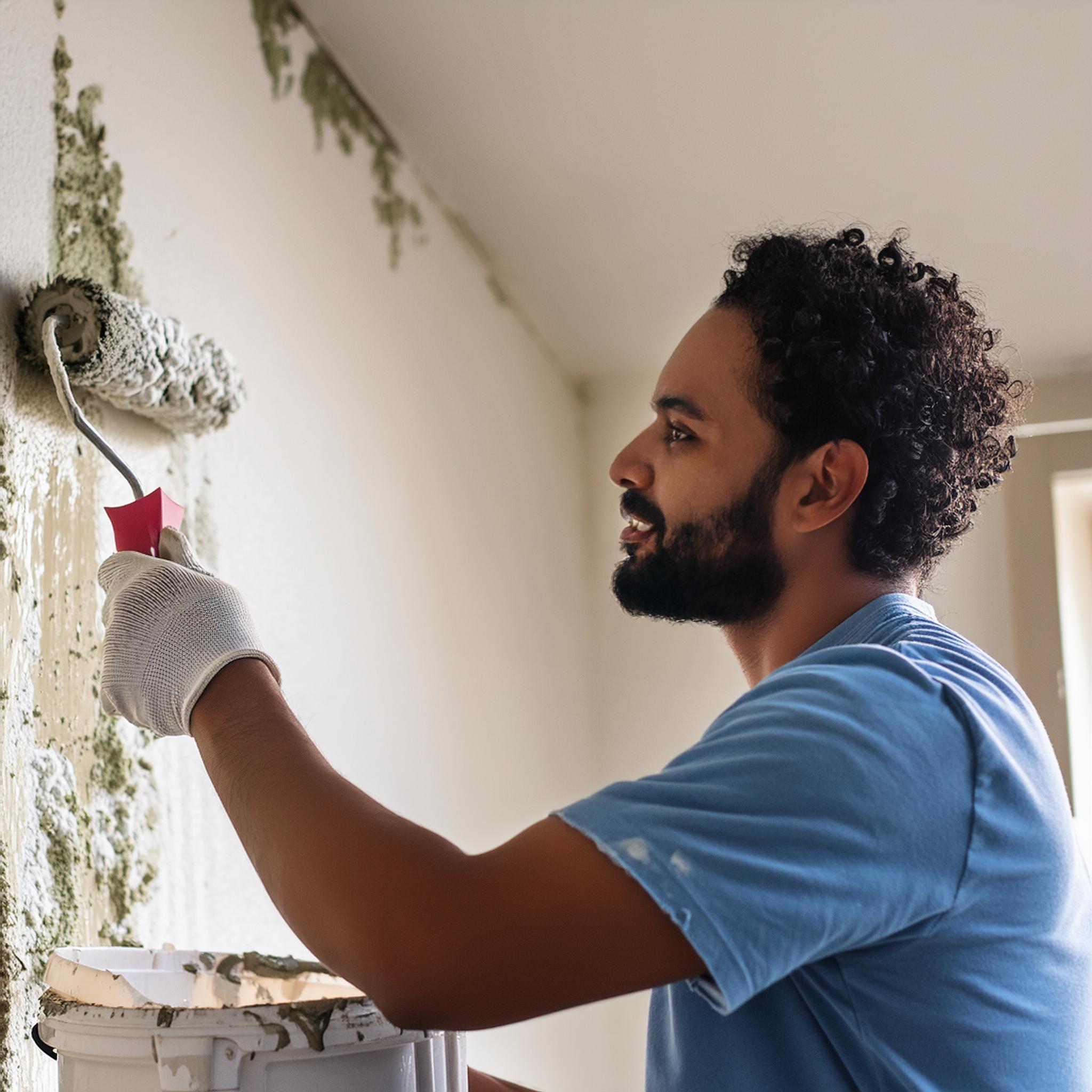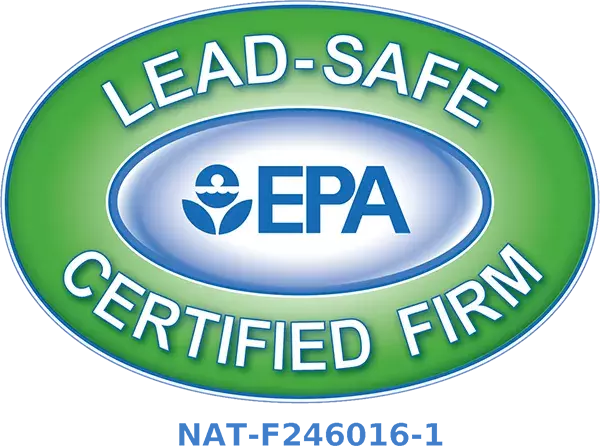As professionals in the mold remediation field, we are frequently presented with interesting queries reflecting the persistent struggle against household mold. Perhaps one of the most intriguing propositions is, “Is there a paint that can kill mold?”. At first glance, it sounds almost too good to be true, doesn’t it? An innovation like this could transform our mold defenses and simplify the path to a clean, healthy home.
In reality, though, it’s a bit more complex. So, buckle up as we dive into the science behind mold and its interaction with certain paints. We’ll debunk some myths, shed light on vital realities, and navigate you toward making informed decisions about effective mold management.
Understanding Mold-Resistant Paint
What is Mold-Resistant Paint?
Mold-resistant paint is a uniquely formulated paint designed to create an inhospitable environment for mold growth. Infused with antimicrobial ingredients, it discourages the growth and spread of mold on painted surfaces. Nevertheless, it’s crucial to bear in mind that while mold-resistant paint is a practical preventative tool, it is not intended to eliminate pre-existing mold.
How Does Mold-Resistant Paint Work?
Mold-resistant paint forms a barrier that, thanks to its antimicrobial properties, can prevent mold spores from attaching and growing on the surface. This makes it a particularly useful choice for areas that are commonly subject to high humidity or moisture—bathrooms, kitchens, laundry rooms, and basements, for instance. That being said, it is important to understand that mold-resistant paint is a preventative measure. Although it can help deter mold growth on new or recently cleaned surfaces, it is not equipped to kill active mold infestations.
Advantages of Using Mold-Resistant Paint
The Benefits of Mold-Resistant Paint
When applied under the right conditions, mold-resistant paint offers numerous advantages. But remember, it’s most effective when the surface is mold-free to begin with. Here are some of the key benefits:
- Durability: Antimicrobial ingredients added to the paint provide protection against the long-term damage that mold and mildew can cause to your walls.
- Preventive Measure: It acts as a safeguard against potential future mold growth, adding a layer of protection to areas that are typically prone to moisture and high humidity.
- Healthier Environment: Mold growth can lead to health issues ranging from allergies to more severe respiratory problems. By preventing the breeding of mold, the paint promotes a healthier living environment.
Successful Case Examples
Our South Florida mold restoration team has successfully used mold-resistant paint in numerous homes and businesses over the years. Typically, these are cases where we have remediated mold, and the client opts for an extra precautionary measure. For instance, a homeowner we recently worked with had recurring mold issues in their basement. After remediation, we used mold-resistant paint. In the two years since treatment, they have experienced no mold recurrence.
Addressing the Misconception
While mold-resistant paint is a fantastic innovation in the home improvement industry, we need to clear up the misunderstanding causing many homeowners to paint over mold, thinking it will solve their problem. Regrettably, using mold-resistant paint over existing mold has the potential to perpetuate and escalate the issue rather than resolve it.
Does Paint Kill Mold?
In a word, No. Mold-resistant paint is designed to prevent mold from developing on the painted surface, but it does not have the properties to kill or eliminate existing mold growth. Painting over mold is akin to putting a bandage on a wound without cleaning it first. While it might hide the problem for a while, it doesn’t address the root cause, allowing the issue to persist and possibly worsen.
Why Painting Over Mold is Problematic
Mold-covered walls that are simply painted over can result in several detrimental issues, as outlined below:
- Hiding the Mold Doesn’t Remove It: Painting over mold only conceals it temporarily. Underneath the paint, the mold will continue to grow, affecting the integrity of your walls and spreading to other areas.
- Health Risks: Even hidden under paint, molds can still release spores, causing allergies or respiratory issues for the inhabitants.
- Damage to the Paint Job: Over time, mold growth will affect the new paint job, causing peeling and discoloration. It’s only a matter of time before the issue becomes visible again.
The Importance of Professional Mold Remediation
If mold-resistant paint isn’t the cure-all for your mold problems, what is? The answer is professional mold remediation. In the face of mold damage, hiring professionals ensures the removal of not just the visible growth, but also the invisible spores and the underlying cause of the issue.
Why Professional Mold Remediation is Essential
Years of experience have taught us that managing mold is a complex task best left to well-equipped professionals. Here’s why:
- Expert knowledge: A professional mold remediation service can identify the mold species and locate potential hidden colonies, providing a comprehensive solution.
- Specialized equipment: Professionals have access to advanced equipment and proven methodologies to ensure thorough mold removal.
- Safety measures: Manipulating mold can be hazardous without strict safety measures. Professionals are trained to do this task without causing further damage or health risks.
How Does Mold Remediation Work?
In most scenarios, mold remediation involves a series of well-planned steps:
- Comprehensive inspection and mold identification
- Drying of the moist areas where mold prospers
- Safe and thorough removal of mold-infested materials
- Cleaning and sanitization of the affected area
- Repairs or modifications to prevent future growth
- Use of preventive measures such as mold-resistant paint once the area is clean and dry
It’s important to understand that each mold situation is unique, and while this is a general process, your remediation plan might be custom-tailored to your home’s specific needs.
Professional Mold Remediation vs. DIY Methods: The Clear Winner
While online DIY methods may seem tempting due to perceived cost savings, they often provide short-term solutions and can compound the problem. Professionals, on the other hand, provide long-term solutions that address mold at its source. With a professional mold remediation service, you’re not only paying for mold removal but also for the peace of mind that comes with knowing the issue has been thoroughly resolved.
At J&R Restoration, we also treat water damage, which goes hand-in-hand with mold issues, as well as fire damage, which often leads to water damage as well. Contact us today to get started, and don’t leave your health and the well-being of your property to chance.


